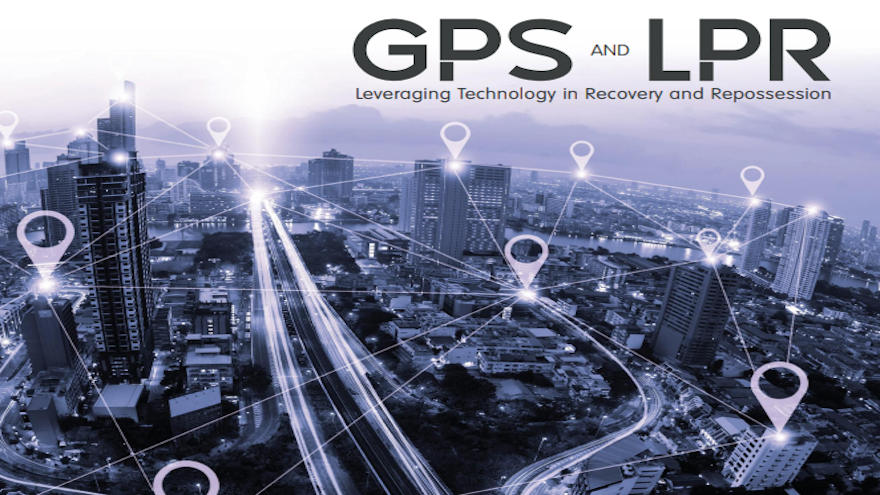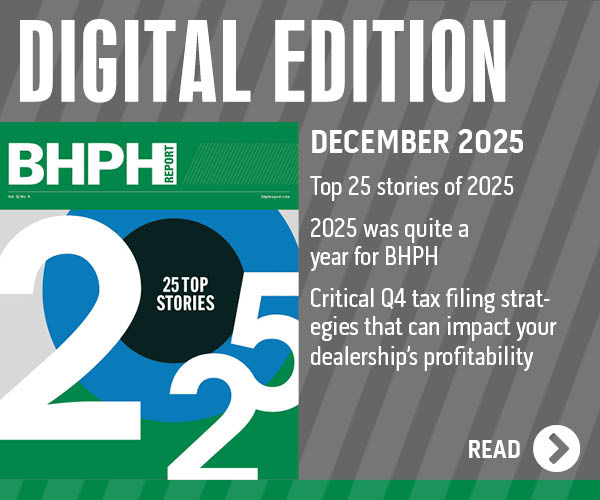Top executives from GPS & LPR worlds discuss pandemic, industry future & more

By subscribing, you agree to receive communications from Auto Remarketing and our partners in accordance with our Privacy Policy. We may share your information with select partners and sponsors who may contact you about their products and services. You may unsubscribe at any time.
CARY, N.C. –
Two of the sharpest tools buy-here, pay-here operators can use to mitigate their risk are GPS devices and license-plate recognition technology.
With the pandemic still significantly impacting just about every aspect of life nowadays, BHPH Report reconnected with two top executives from companies that specialize in these technologies.
Jeremiah Wheeler is executive vice president and general manager of fintech at DRN and MVTRAC, which offer LPR technology along with other data and analytics services. Chris Macheca is president and chief operating officer of PassTime, which serves dealerships and finance companies with GPS tracking and starter-interrupt devices.
Macheca and Wheeler touched on not only how their respective technologies are playing a greater operational role during the pandemic, but each executive looked ahead at how change might be in the works in conjunction with collections, credit availability and the potential fortunes of BHPH dealerships.
BHPH Report: In a pandemic-impacted world, how much more valuable are GPS devices to help mitigate risk and track collateral?
Chris Macheca: Obviously lowering risk is really important today, especially as we’ve seen moratoriums on repossessions. At least having something on the vehicle lets you know that the vehicle is still in operation. One of the leading causes for non-payment is a vehicle that’s not operating. GPS devices can tell you these things, whether it’s still operational, whether it’s still being used and potentially that it’s being used in the manner that you expect it. We’ve seen a lot of our customers really dig into the data to try to help them identify where potential problems might be coming down the road. We’ve seen a huge uptick in the interest in GPS, even more than before.
Subscribe to Auto Remarketing to stay informed and stay ahead.
By subscribing, you agree to receive communications from Auto Remarketing and our partners in accordance with our Privacy Policy. We may share your information with select partners and sponsors who may contact you about their products and services. You may unsubscribe at any time.
BHPH Report: How much is the possible misunderstanding out there that LPR is just for banks and large finance companies but also can be for independent dealerships that have a related finance company?
Jeremiah Wheeler: I think the first misconception people think of when they hear that we’re a semi-large data and analytics company is that only big banks and lenders could use something that we sell/ When in reality everyone that has a loan out there regardless of the size of the entity, if they have defaults, they can use our service. LPR, because it’s gathering so much data and it’s not really picking and choosing who it gathers data on as far as the license plates are concerned, we do have a large number I would call medium to small customers. Some of those customers are buy-here, pay-here, independent dealerships that carry their own loans on their own books. It’s really up to the entity that’s looking and what types of data sets they’re using to help do their skip-tracing and location efforts. Ours fits right in. It’s an additive. It’s not necessarily always the one-stop-shop solution, but it is a really good additive for incremental lift on recovery volumes.
BHPH Report: How much has the battle intensified against consumers using online resources to find and disable devices?
CM: We haven’t seen a real increase in that in a long time. The importance of the proper disclosure of the device is a big part of that. We do a lot of work with our customers on ensuring that the consumer understands the purpose of the device that it’s to help them. But inevitably it comes down to that the devices help the honest people honest. The vast majority of consumers intend to make their payment. They don’t intend to create a problem or cause a default. We really haven’t seen an increase in tampering or disabling or consumers doing something that is not in compliance with their agreement.
BHPH Report: Cellular carriers are touting the rollout of 5G technology. What impact now or down the road might this technology have on GPS tracking?
CM: I think it’s all good. As technology evolves and the networks advance, it allows for more efficient communication with GPS devices, more resources from the network. Our current devices, although 4G, are compatible with the 5G networks, so there is some streamlining within the networks to ensure greater longevity for those products. The new 5G rollouts are bringing a lot of opportunities for us as we advance the technology to get into ultra-low power technology and things that will allow us to offer more features, more functions, more opportunity to better utilize and be more efficient in the use of GPS tracking. The biggest thing is longevity and advancement of the technology.
BHPH Report: As complex as new and late-model vehicles can be, how does that influence how devices can be installed and function?
CM: You’re absolutely right. The vehicles continue to evolve. The computers and technology in them are far more advanced than they were 10 to 20 years ago. That makes us continue to evolve. What we have really seen is a lot greater adoption of easier to install devices like our battery-powered Encore device. We’re seeing a large influx in demand for that type of technology. On the starter-interrupt side, we’ve had to modify our technology to accommodate some of the different features, the start-stop feature, the push-button features of certain vehicles. We continue to advance the technology. But I think what we’re seeing is a dealer’s level of the technology is going to where they want an easier solution and we’re seeing that being filled with our Encore, battery-powered that are much easier to use.
BHPH Report: If a dealership does its own repossessions, rather than using an agent, how can LPR still be a part of the process?
JW: I think the focus there would be particularly on our DRNsights product, which is an intuitive user interface, a web-based platform that allows any user like a collector or office manager is sitting at their dealership and they’re looking for a car. Some buy-here, pay-here dealerships use GPS system, which I’m sure everyone is familiar within this industry. Sometimes those systems can be disabled, especially if someone has ill intent to not pay their car note. They’re probably going to go straight to YouTube and say, “How do I locate and disable GPS that I know is on the car because I sign a release?” Then the dealership can be at a loss because they don’t know where to look for the car. In some cases, I’ve seen where people will buy from a buy-here, pay-here dealership and have no plans of staying within that city or state. Then they take it two or three states over. Or they buy within the area where they live, but then they sell to a relative, which lives far away. They’re up in Chicago but the dealer thought the car was in Dallas. With LPR, you key in the VIN and through the license plate, it can give a view of all of the locations and sightings and at what time of day. It’s really a platform where you punch it in and there are the results. Now, if you need an agent, you can assign one in the right location based on historical data.
BHPH Report: What might be a couple of memorable anecdotes you remember when LPR played a critical role in helping a store find a vehicle the operator might have thought was gone forever?
JW: I think particularly related to buy-here, pay-here dealers and smaller entities that are doing the tote-the-note, so to speak, there’s a lack credit and a lack of history on that individual from digital footprint standpoint. Those people, when they skip out, they’re very hard to find because it’s almost like they don’t exist from skip-tracing or digital footprint standpoint. We’ve had a couple of decent size dealers that sell 50 to 60 cars a month and they’re financing them themselves and then all of sudden the customer skips and they can’t find them. We have helped a couple of buy-here, pay-here dealers find their cars where they had assigned it everywhere they knew or thought the car may be or had a lead. It was 120 days past due. We then found the car 1,500 miles away in a completely different part of the country because that person was transient and moved a lot. They got a gig in Seattle so they went there. We have hundreds of stories like that, not just in the buy-here, pay-here space but also Maserati and other very expensive luxury cars that have $80,000 values where we helped to find them in a totally different place.
BHPH Report: What have been the top concerns you’ve heard from dealerships and finance companies in recent months and how has your company responded?
CM: As probably others have said, the biggest issue that was most dealers were dealing with over the last several months has been inventory and inventory prices, which has really put the clamps on cash flow for dealers. Cost has been a big thing so we’ve been trying to be as cognizant as we can on cost and value proposition for our customers, helping them be more efficient. We’ve been bringing in partners who can help them be more efficient in how they operate their business. I think there’s just a lot of uncertainty. So much has changed in the past 11, 12 months. Really, no one can predict what’s going to happen in the next six to 12. There’s a lot of hesitation, I would say, to really go out on a limb by a lot of people. Many are taking a more wait-and-see approach to things. But from what’ we’re expecting from our customers, we’re expecting growth. We’re continuing to see our core customers, the true buy-here, pay-here customers, consumers still need reliable transportation. They might not be commuting as much to and from work, but they still have to get to certain places to do certain things, whether it’s the doctor’s office, the grocery store. Reliable transportation is still very important. That’s what our customer base provides. We, by enabling the GPS, then help mitigate the risk for those dealers and lenders to provide that reliable transportation to consumers. There’s some cautious optimism, I would call it, if that’s a good term. Overall, I think the core subprime, buy-here, pay-here and independent car dealer segment is looking very strong.
BHPH Report: Depending on what happens with the economy, how do you see the LPR world potentially making more inroads into the BHPH space in the coming months?
JW: I think it’s not just the inroads we can make. It’s also the growth of that particular segment of the market. As we saw in 2008 when we had the banking crash, so to speak, and the lenders retracted and stopped lending, the buy-here, pay-here industry boomed for a number of years. There were new dealerships popping up all over the place. With the economic crisis we’re in now due to the pandemic, once lenders figure out where their risks lie and how their books are changing because of the deferrals and longevity of this pandemic, and unemployment and the overall individuals’ economy crisis within their borrower base, I think we’re going to see a lot more changes in credit reports and scores. There’s only but so long that they can manage this data trail of not paying, deferrals and coming off of deferrals and then still not being able to pay because they’re unemployed. I think as you see creditworthiness start to go down, you’re going to see a lot more entities pop up. And the buy-here, pay-here space will get a lot bigger and a lot stronger. You’re going to see a shift in that near-prime and prime going to the subprime and deep subprime areas. As that happens, the books get risky. Cars can get harder to find. You’re going to see LPR really grow in those areas because we’re doing a lot more now with regard to risk scoring and behavioral analytics and things like that, not just helping you locate your car. We have a number of subprime lenders now looking at our data and analytics across the board of their servicing portfolio, not just delinquency. They want to see if they can measure propensity to skip and propensity to charge off. It’s working pretty well. But I think the economy is really all up in the air right now. We just have to see how it continues to go as the pandemic progresses and see how much we can help out there.


